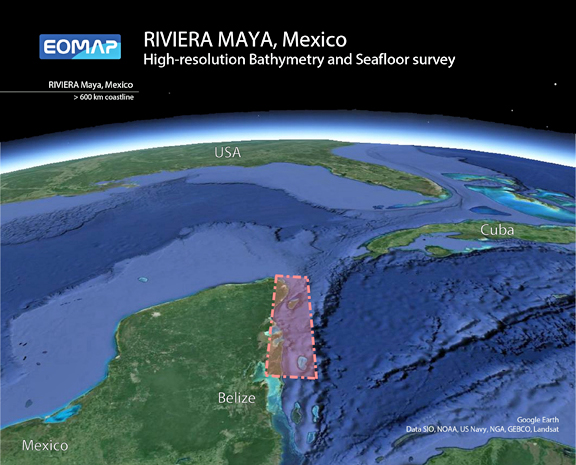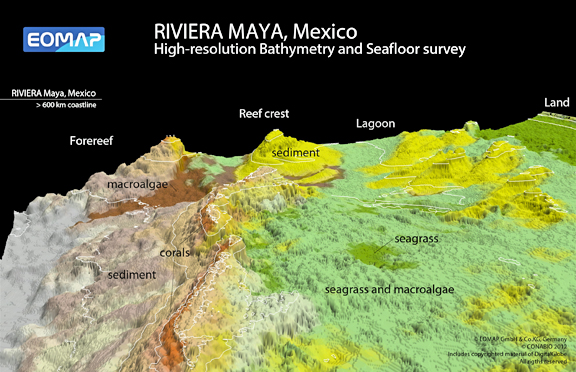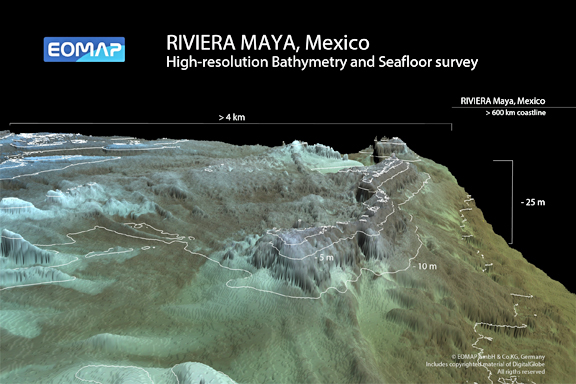
[SatNews] EOMAP was contracted by the Mexican National Commission for Knowledge and Use of Biodiversity (CONABIO) to deliver high resolution environmental information for the entire Maya coast.
This coastline extends 600km south from the Yucatan Peninsula to the border of Belize. In total more than 5000 sq km of the marine environment, including ecosystems such as corals, seagrass and mangroves, were mapped in water depths down to 25m.
“The fine-scale spatial information, derived for the entire coastline, will serve as the first baseline dataset of the Maya coast, and will help to understand and preserve the vulnerable ecosystems.” Said Dr. Thomas Heege, CEO of EOMAP GmbH & Co.

CONABIO is a permanent interdepartmental commission promoting, coordinating and carrying out activities aimed to increase awareness of biodiversity and its conservation and sustainable use. To fulfill its mission CONABIO relies on accurate and fine scale baseline maps for land and sea. For Mexico’s extended coastlines, traditional surveys were by far too time consuming and expensive and CONABIO therefore decided to use a satellite-based approach. In early 2012, EOMAP’s technology was applied for bathymetry and seafloor mapping, using the highest spatial multi-spectral resolution satellite data available (DigitalGlobe’s WorldView-2 eight-band sensor).

“EOMAP was selected because we have seen their satellite-derived, high resolution seafloor and bathymetry products in very successful, previous projects. The services and products delivered for the Mexican Maya coast are exceptional and will be fundamental in developing our seafloor habitat baseline. Such a baseline is critical in assessing short and long term impacts to the environment from both man-made and natural causes,” said Dr. Rainer Ressl, Director Geomatics Department of CONABIO.
The project was completed in three phases: satellite data was first ordered and checked for its mapping feasibility, then EOMAP delivered spatial datasets of bathymetry and seafloor properties, and finally the validated habitat classification was performed.
“Mapping the seafloor habitats and bathymetric information for such extended areas is of growing interest for both environmental as well as engineering applications. Our algorithms are operational and standardized, enabling us to survey, map and monitor extended or inaccessible areas at a fraction of the cost of traditional survey methods,” said Dr. Magnus Wettle, Chief Scientist of EOMAP Asia Pacific.
EOMAP GmbH & Co. KG has been delivering satellite-derived bathymetry and seafloor habitat services worldwide for a growing number of customers in the oil and gas, engineering, environmental and hydrographic sectors.
For more information on EOMAP, please visit: http://www.eomap.com/

